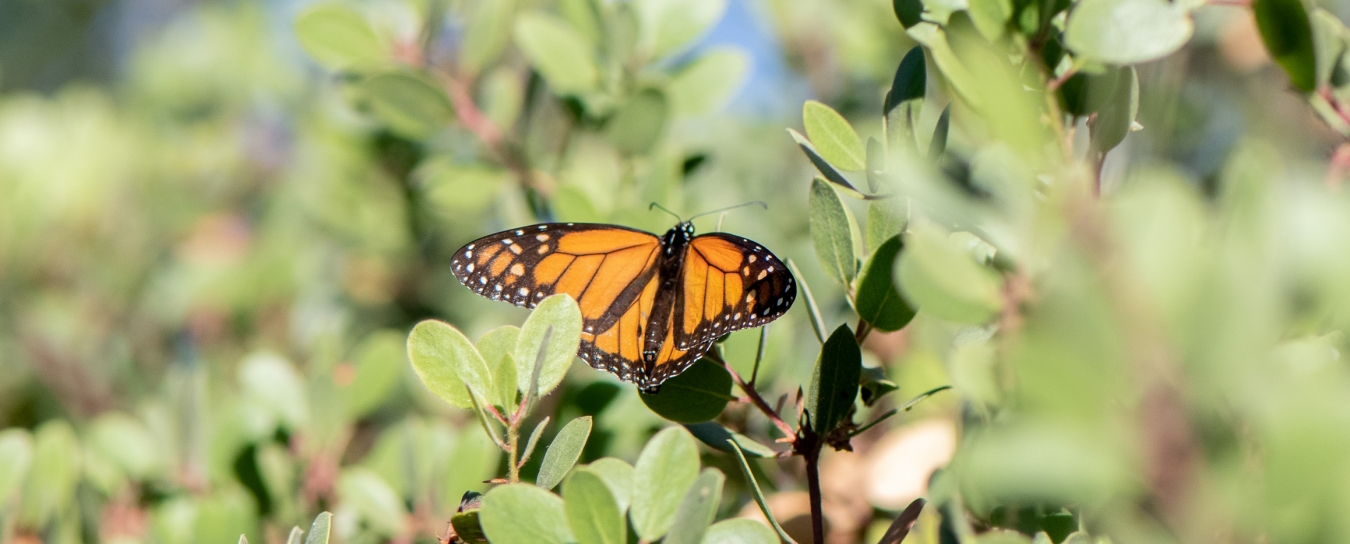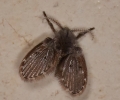
Invertebrates
See our handy guide to critters found in local homes and our Central Coast Butterfly FAQ. Browse the insects and other terrestrial arthropods we’ve identified. Check out local marine invertebrates, particularly bivalve mollusks and intertidal organisms.
- Anthropology
- Rocks & Fossils
- Invertebrates
- Vertebrates
- Botany
- Astronomy
- Fungi
- General
- Recently Asked
Moth or fly in the bathroom
Thank you very much again for the recent help with the fungus ID.
I now have another request, an entomological one this time.
These little ones have been hanging out in the bathroom lately. I thought they were flies until I finally got a photograph of one. Now I can see that they're moths of some sort.
They are very tiny, only about 3/16" long. They're very docile but, sadly, they keep flying under the flowing water and getting drowned.
Photo attached.
Gratefully,
Daryl

Curator Response
Dear Daryl,
Fantastic photo! This is actually not a moth, but a fly, and one of my favorite insects! They are, in fact, often called moth flies, but also drain flies, filter flies, or bathroom flies, as explained below. Flies can be readily separated from most other look-alike insects by having only one pair of wings; wasps, bees, and moths have two pairs (but sometimes it is difficult to discriminate the front wing from the hind wing in insects with folded wings).
These flies belong to a family called Psychodidae, which includes a range of tiny and mostly hairy or scaly flies, including the pesky sand flies that bite beachgoers in tropical regions. This one, however, is completely harmless to humans and is a peaceful denizen of most of the world’s buildings with any sort of plumbing (including your bathroom, apparently!). It is Clogmia albipunctata, known as the Bathroom Moth Fly since it is the most common one encountered in this situation. This species is recognized among closely related species by the two black dots near the middle of each wing.
Their larvae are tiny, dark, slender maggots with rather unkempt-looking hairs on their backs. They’re well-adapted to live in small pockets of muck that inevitably form within drains of sinks, floors, bathtubs, and showers, the bottoms of plant pots, and sewage filtration systems, where they feed on decaying organic matter. The adults essentially don’t feed, have a weak, fluttery flight, and don’t disperse very far. Once established they are reportedly extremely resilient and difficult to eradicate, even using bleach or boiling water, without thoroughly cleaning the source of the population and removing their food supply; the eggs are also able to survive dehydration. While you wouldn’t necessarily want to keep these flies around in a sterile environment (e.g., a hospital), I find them to be friendly, interesting, and benign cohabitants in the home and workplace!
Stay curious,
Schlinger Chair & Curator of Entomology Matthew Gimmel, Ph.D.


